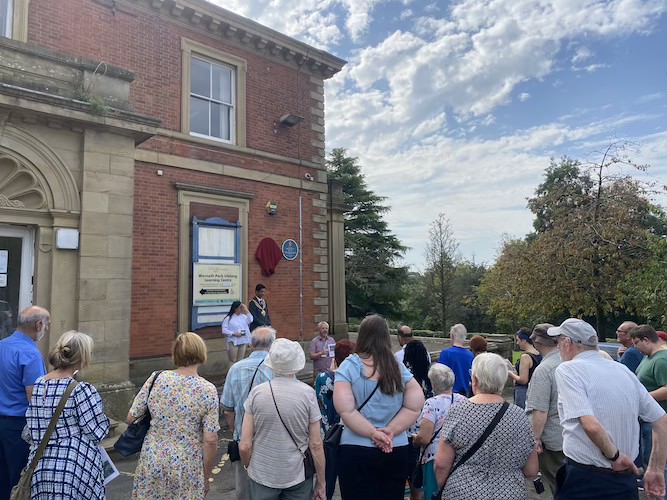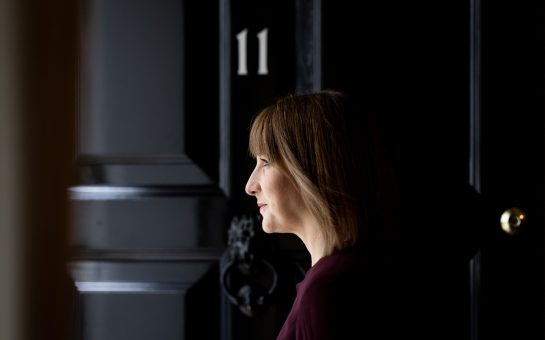A plaque has been unveiled in Oldham’s Werneth Park, commemorating the suffragist Marjory Lees on what would have been her 145th birthday.
The event was part of Oldham’s ongoing Oldham Histories Festival, which runs until September 17.
The plaque joins another already present, dedicated to Marjory’s mother, Dame Sarah Lees.
Mayor Councillor Zahid Chauhan said at the unveiling: “It is really important that we recognise selfless people that have given so much to the people of Oldham, and Marjory is obviously top of the list. She fought for the rights of my daughters and yours.”
Leader of Oldham Council, Councillor Arooj Shah, said: “The journeys that both Marjory and Sarah took for women mean that we can vote today. They were pioneers.”
The legacy of these women can be seen throughout Oldham. Their groundbreaking achievements are, however, little known outside of the town. Marjory and Dame Sarah were pioneering women, whose work had national ramifications.
Marjory’s plaque is hung on the wall of her former home, now a further learning centre. Werneth Park was her gift to the people of Oldham, given in 1936 after the death of her mother. One of her most palpable legacies, the Mayor Chauhan was keen to impress the extent of Marjory and Dame Sarah’s philanthropy.
It is not just the beautiful and well-loved Werneth Park for which Marjory will be remembered. A suffragist, she and the Oldham Women’s Suffrage Society took park in 1913’s Suffrage Pilgrimage, marching to a 50,000-strong rally in Hyde Park. An Oldham councillor since 1919, her political career began only months after women were first allowed to be admitted to Parliament. A founder of the Beautiful Oldham Society and honorary secretary of her branch of the National Union of Women Workers, Marjory’s activism touched on national and local issues.
Marjory’s mother, Dame Sarah, led a life just as fascinating and groundbreaking. Born in 1842, aged 67 she became mayor of Oldham, the second woman in England to ever hold the title, and the first of a substantial town. Dame Sarah threw herself into local life, whether as President of the Oldham Royal Infirmary, or as chairman of Oldham’s branch of the League of Nations. After very active final decades, Dame Sarah died in 1935 at the age of 92.
One of the striking things about this story is the absence of a male figure. The lack of a patriarch in this tale of early 20th Century politics is undoubtedly unusual. Nowhere in Oldham will a plaque be found to father or husband Lees.
Marjory’s father, and Dame Sarah’s husband, Charles Edward Lees, was a mill owner. He might have had a more prominent part in this story, had he not have died in 1894, when Marjory was just 16. Charles Lees left his wife not only a beautiful home and estate, and the wherewithal to maintain it, but also freedom. It is hard to imagine Dame Sarah rising to the rank of mayor, with a Victorian patriarch at home. Marjory Lees, meanwhile, never married.
Oldham’s Civic Centre displays the caskets of Marjory and Dame Sarah just outside of the council chambers, along with their portraits. A trip to an Oldham dentist, meanwhile, might lead you to the Marjory Lees Dental Centre, which the Oldham Times describes as a tribute to her work with the health of mothers and babies.
An appreciative crowd gathered to watch the plaque unveiled, which followed a historical walking tour of Werneth Park. The people there were all well aware of the legacy of the Lees women, and the councillors of Oldham’s Werneth ward campaigned and paid for this plaque.
It seems that the people of Oldham are determined to insure that the legacy and contribution of Dame Sarah and Marjory Lees are not forgotten.




